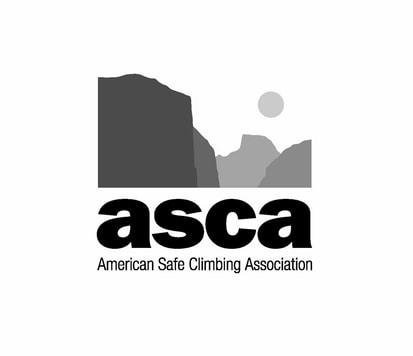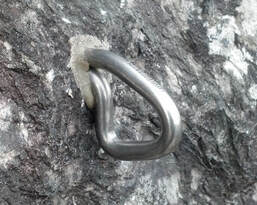HUGE THANKS to the
|
# of Bolts Replaced : 164
# of Routes Made Safe : 35
What We Do
SLVCA is dedicated to the extraction of dangerous, outdated climbing hardware and replacing them with safe, bomber bolts.
How We Do It
We are wildly impressed by the natural beauty and aesthetic of rock in all forms, and our goal is to preserve that beauty as much as possible.
We use hole-for-hole techniques when replacing. Our goal is to extract the bad bolt, remove it completely from the rock, and reuse the same hole when placing the new bolt.
We use hole-for-hole techniques when replacing. Our goal is to extract the bad bolt, remove it completely from the rock, and reuse the same hole when placing the new bolt.
Why Glue-Ins?
Some may be more accustomed to the classic bolt/hanger combo, but we are mainly using glue-in bolts (twisted leg bolts or wave bolts) in our replacement work. Glue ins are not suitable for all types of rock. However, much of the rock in the San Luis Valley is Fish Canyon Tuff, which has a hard (beautiful!) patina and a very soft core. This type of soft rock is very suitable for glue-ins.
The benefits:
- Higher pull-out and shear strength than mechanical bolts, especially in soft rock.
- Less visual impact on rock surface
From the ASCA:
Adhesive bolts work because the glue used with them penetrates the rock where it forms a chemical coupling. With right glue, this molecular linkage can be as strong as the rock itself, meaning that a chunk of the cliff has to break loose for the bolt to pull out. Further, the glue reinforces loosely layered or fractured rock, giving adhesive bolts a decided edge over mechanical anchors. And glue-in bolts age better, too. Mechanical bolts loosen and weaken under the stress of repeated loadings and temperature changes. But in tests conducted by the fastener company Emhart/molly, 20-year-old adhesive bolts were as strong as new. And since the glue completely seals the hole, the anchor is practically impervious to the elements.
The benefits:
- Higher pull-out and shear strength than mechanical bolts, especially in soft rock.
- Less visual impact on rock surface
From the ASCA:
Adhesive bolts work because the glue used with them penetrates the rock where it forms a chemical coupling. With right glue, this molecular linkage can be as strong as the rock itself, meaning that a chunk of the cliff has to break loose for the bolt to pull out. Further, the glue reinforces loosely layered or fractured rock, giving adhesive bolts a decided edge over mechanical anchors. And glue-in bolts age better, too. Mechanical bolts loosen and weaken under the stress of repeated loadings and temperature changes. But in tests conducted by the fastener company Emhart/molly, 20-year-old adhesive bolts were as strong as new. And since the glue completely seals the hole, the anchor is practically impervious to the elements.
How Can I Help?
VOLUNTEER
There are hundreds of unsafe bolts in the Valley and we have a lot of bolt replacement ahead of us! The crux is that hole-for-hole bolt replacement work can be highly technical and requires significant training time. We are currently working on a comprehensive training program for interested volunteers who want to become proficient at anchor & bolt replacement work. Please stay tuned as we work on creating the educational materials to faciliate the training. Please Contact Us if you are interested in joining the Anchor & Bolt Replacement Committee.
JOIN
REPORT BAD BOLTS
There are hundreds of unsafe bolts in the Valley and we have a lot of bolt replacement ahead of us! The crux is that hole-for-hole bolt replacement work can be highly technical and requires significant training time. We are currently working on a comprehensive training program for interested volunteers who want to become proficient at anchor & bolt replacement work. Please stay tuned as we work on creating the educational materials to faciliate the training. Please Contact Us if you are interested in joining the Anchor & Bolt Replacement Committee.
JOIN
- Join the SLVCA! Membership fees help fund Anchor & Bolt Replacement efforts.
- Also consider joining the Access Fund and the American Alpine Club! Supporting these national climbing organizations help fund local climbing stewardship efforts across the country.
REPORT BAD BOLTS
- If you see something - say something! You can help us identify bad bolts by filing a bad bolt report.



